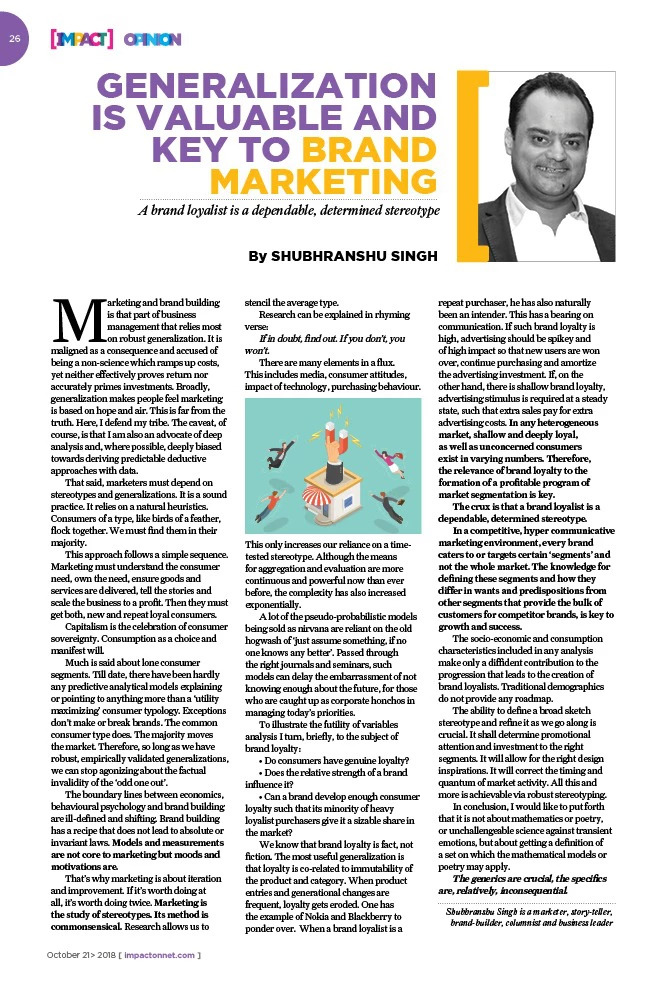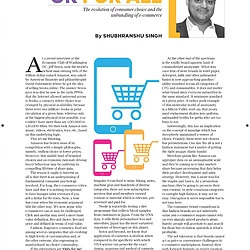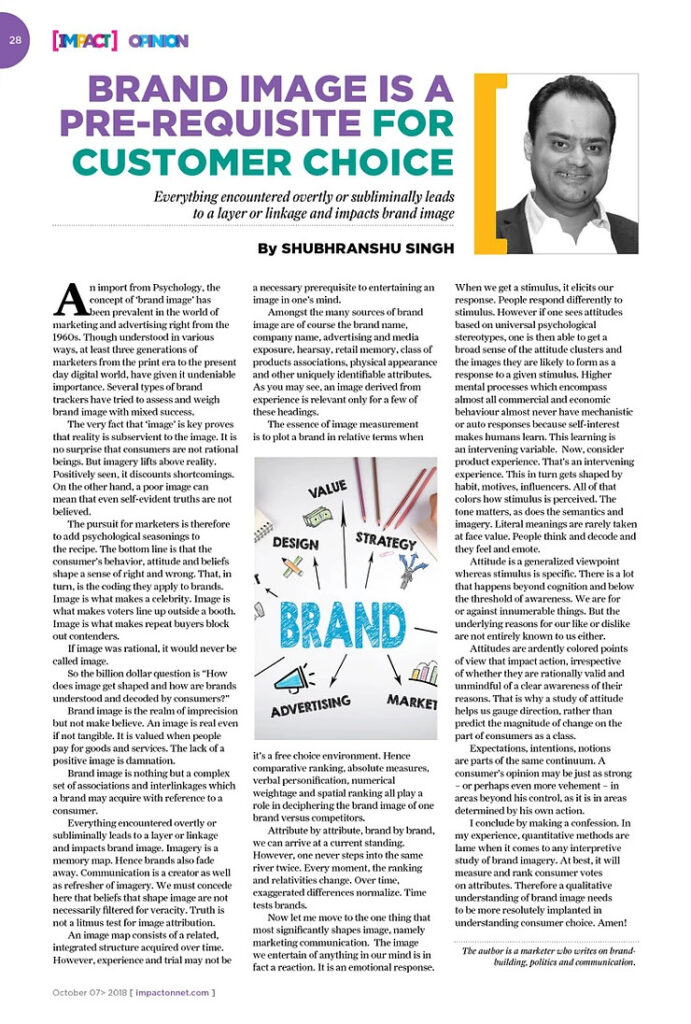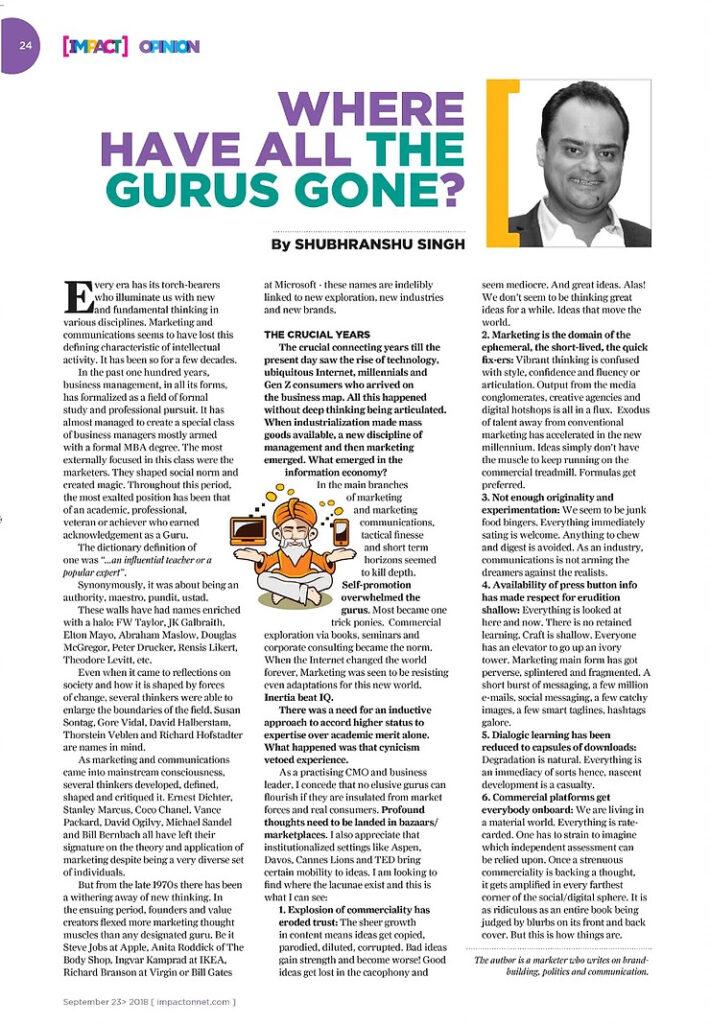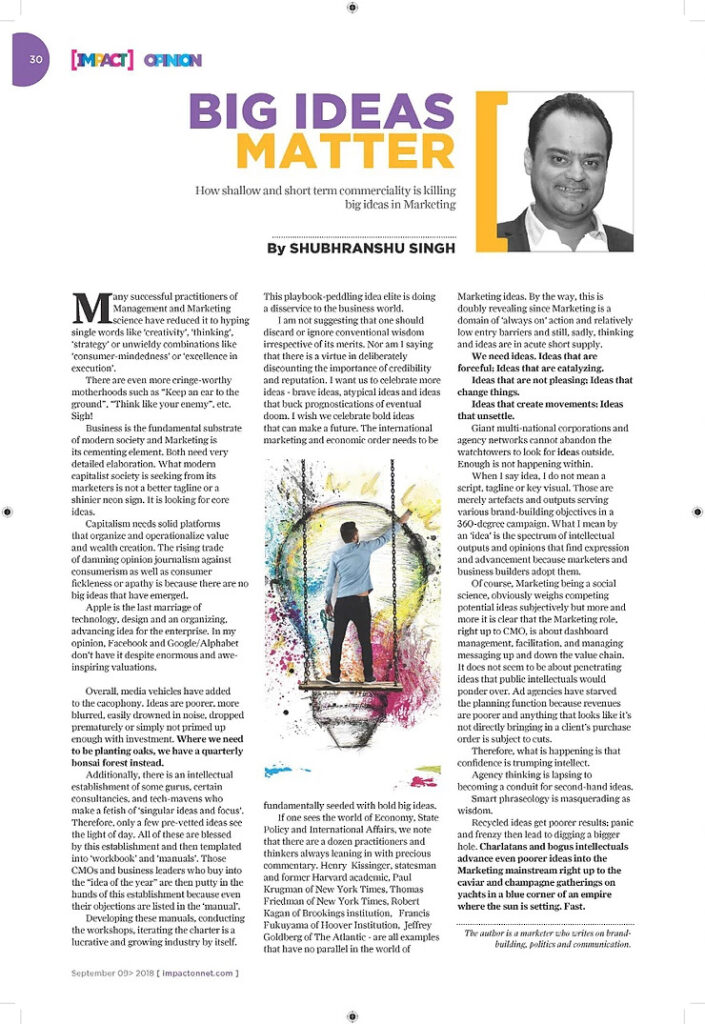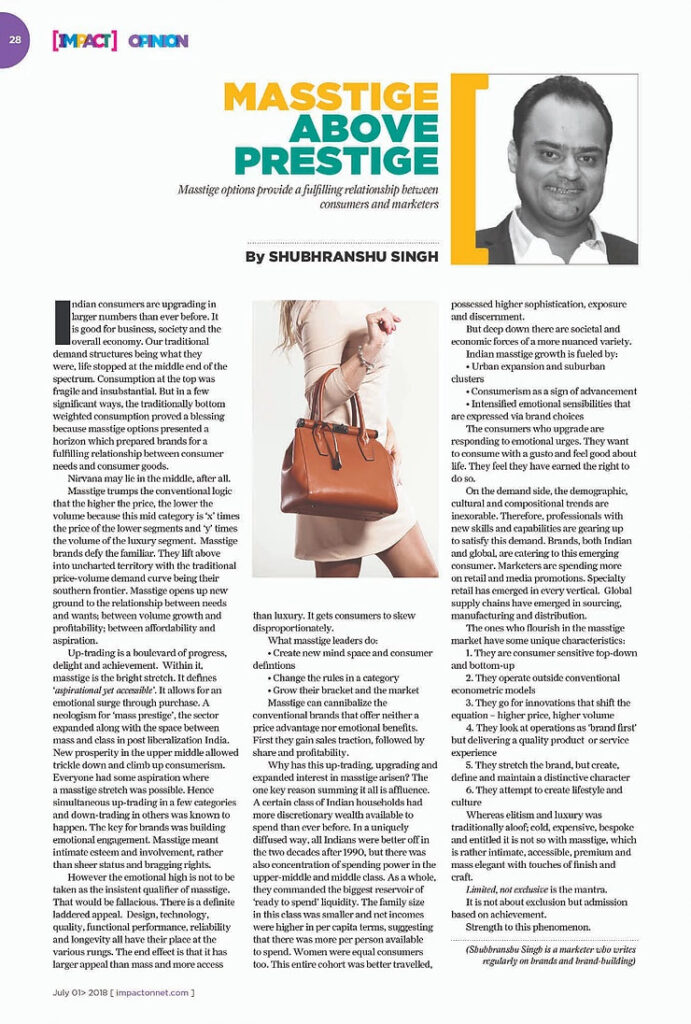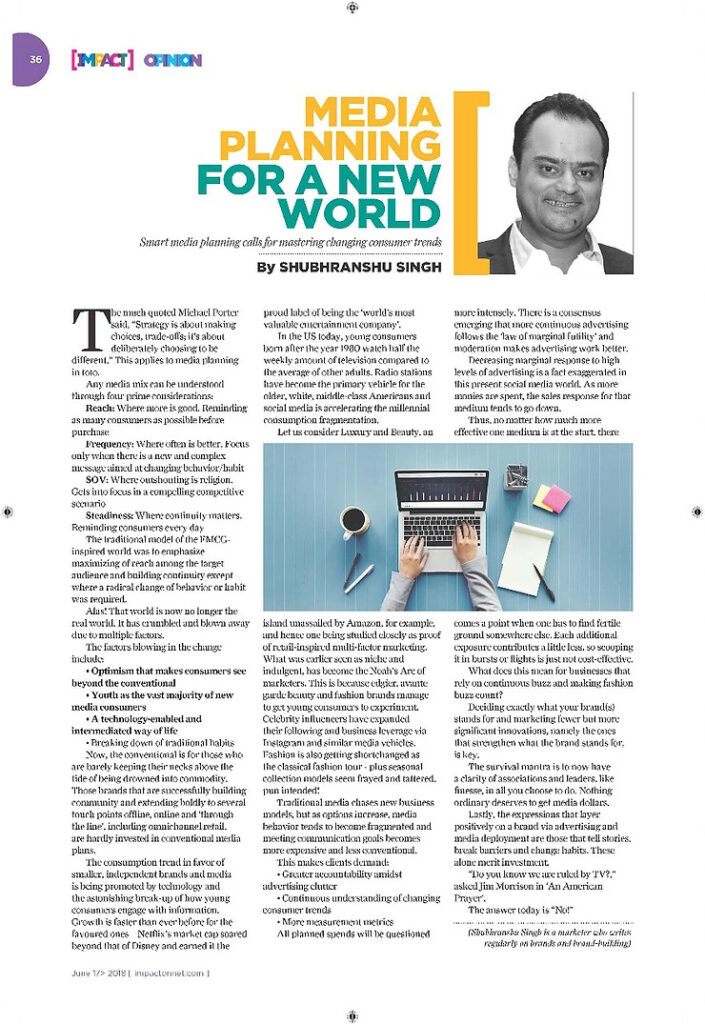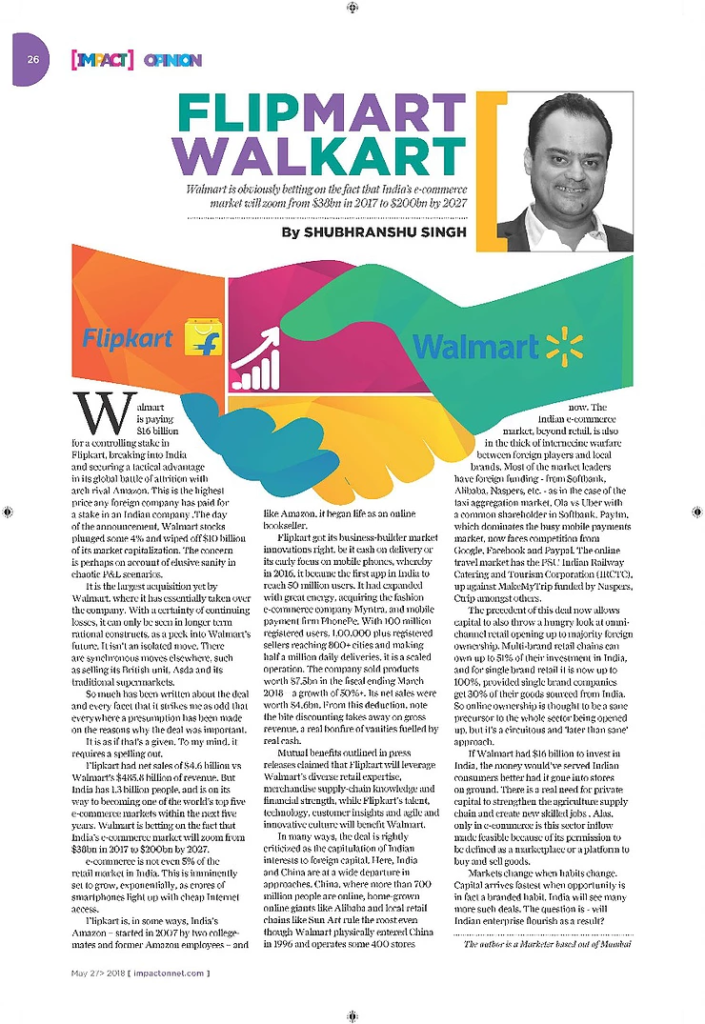Generalisation is Valuable and key to Brand Marketing
Marketing and brand building is that part of business management that most relies on robust generalization. It is maligned as a consequence and accused of being a non-science which ramps up costs but is neither effectively proving return nor accurately priming the investments. Broadly, generalization makes people feel marketing is based on hope and air. It is far from the truth. Here, I defend my tribe. The caveat , of course, is that I am also an advocate of deep analysis and , where possible, deeply biased towards deriving predictable deductive approaches with data. That said, marketers must depend on stereotypes and generalizations. It is a sound practice. It relies on a natural heuristics. Consumers of a type, like birds of a feather, flock together. We must find them in their majority. This approach follows a simple sequence. Marketing must understand the consumer need, own the need, ensure goods and services are made, tell the stories and scale the business to a profit. Then they must get both new and repeat loyalist consumers. Capitalism is the celebration of consumer sovereignty. Consumption as a choice and manifest will. Much is said about lone consumer segments. Till now, there are hardly any predictive analytical models explaining or pointing to anything more than a ‘Utility maximizing’ consumer typology. Exceptions don’t make or break brands. The common consumer type does. The majority moves the market. Therefore, so long as we have robust, empirically validated generalizations we can stop agonizing about the factual invalidity of the ‘odd one out’. [siteorigin_widget class=”SiteOrigin_Widget_Image_Widget”][/siteorigin_widget] The boundary lines between economics, behavioural psychology and brand building are ill defined and shifting. Brand building has a recipe that does not lead to absolute or invariant laws. Models and measurements are not core to marketing but moods and motivations are. That’s why marketing is about iteration and improvement . If it’s worth doing at all, it’s worth doing twice. Marketing is the study of stereotypes. Its method is commonsensical. Research allows us to stencil the average type. Research can be explained in rhyming verse If in doubt, find out. If you don’t, you wont. There are many elements in a flux. This includes media, consumer attitudes, impact of technology, purchasing behaviour. This only increases our reliance on a time tested stereotype. Although the means for aggregation and evaluation are more continuous and more powerful now than ever before, the complexity has also increased exponentially. A lot of the pseudo-probabilistic models being sold as nirvana are reliant on the old hogwash of ‘just assume something, if no one knows any better’. Passed through the right journals and seminars, such models can delay the embarrassment of not knowing enough about the future, for those who are caught up as corporate honchos in managing today’s priorities. To illustrate the futility of variables analysis I turn, briefly, to the subject of brand loyalty: Do consumers have genuine loyalty ? Does the relative strength of a brand influence it ? Can a brand develop enough consumer loyalty such that its minority of heavy loyalist purchasers give it a sizable share in the market ? We know that brand loyalty is a fact, not fiction. The most useful generalization is that loyalty is co-related to immutability of the product and category. When product entries and generational changes are frequent, loyalty gets eroded . One has the example of Nokia and Blackberry to ponder over. When a brand loyalist is a repeat purchaser he has also naturally been an intender. This has a bearing on communication. If such brand loyalty is high, advertising should be spikey and high impact so that new users are won over, and these folks will continue purchases and amortize the advertising investment. If, on the other hand, there is a shallow brand loyalty, advertising stimulus is required at a steady state such that extra sales pay for extra advertising costs. In any heterogeneous market, shallow and deeply loyal as well as unconcerned consumers exist in varying numbers. Therefore, the relevance of brand loyalty to the formation of a profitable program of market segmentation is key. The crux is that brand loyalist is a dependable, determined stereotype. In a competitive, hyper communicated marketing environment every brand caters to or targets certain ‘segments’ and not the whole market. The knowledge for defining these segments and how they differ in wants and predispositions from other segments that provide the bulk of customers for competitor brands is key to growth and success. The socio-economic and consumption characteristics included in any analysis make only a diffident contribution to the progression that leads to the creation of brand loyalists. Traditional demographics do not provide any roadmap. The ability to define a broad sketch stereotype and refine it as we go along is crucial. It shall determine promotional attention and investment to the right segments. It will allow for the right design inspirations. It will correct the timing and quantum of market activity. All this and more is achievable via robust stereotyping. I conclude that it is not about mathematics or poetry, unchallengeable science against transient emotions but about getting a definition of a set on which the mathematical models or poetry may apply. The generics are crucial, the specifics are, relatively, inconsequential.
Generalisation is Valuable and key to Brand Marketing Read More »

